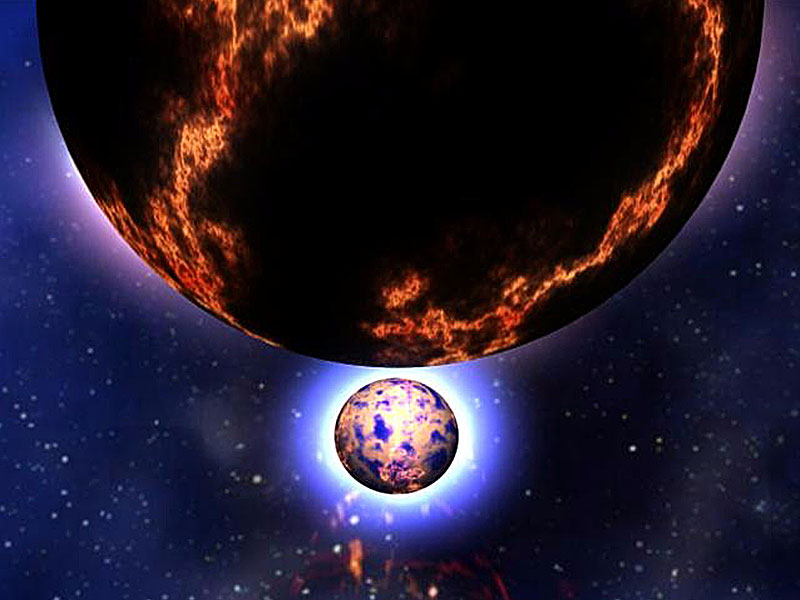 |
Астронет: Астрономическая картинка дня Где возникают короткие гамма-всплески? http://variable-stars.ru/db/msg/1208756/eng |
Credit & Copyright: Dana Berry,
NASA
Explanation:
What causes gamma-ray bursts?
The most energetic type of explosions known in the cosmos has been an enigma since
discovered over 30 years ago.
It now appears that there may not be one unique type of progenitor.
Long duration
gamma-ray bursts (GRBs) have been
localized, over the past few years, to
blue regions in the universe rich in star formation.
Massive young stars nearing the end of their short lives commonly explode in these
regions.
Astronomers associate these
long duration GRBs, that can last from seconds to minutes,
with a type of stellar explosion common in young massive stars.
Over the past few months, short duration GRBs have finally been
localized and found to occur in different types of regions -- not only
blue regions rich in star formation.
Many astronomers therefore now theorize that
short GRBs, which typically last less than one second, are the result of a
different progenitor process
than long GRBs.
A leading model is that a short GRB will occur when a
neutron star
either impacts
another neutron star or a
black hole.
Such collisions may occur well after star-forming regions have otherwise burned out.
Pictured in the above illustration, two energized
neutrons stars finally approach
each other in their orbits, a death spiral that might end with a short GRB.
Authors & editors:
Robert Nemiroff
(MTU) &
Jerry Bonnell
(USRA)
NASA Web Site Statements, Warnings,
and Disclaimers
NASA Official: Jay Norris.
Specific
rights apply.
A service of:
LHEA at
NASA /
GSFC
& Michigan Tech. U.
